
29th July 2021

If you’re promoting your business online, your main goal should be to attract new customers.
While your advertising tactics and digital content is a great place to start, the only way to effectively reach and engage a global audience is to show up in online search.
Search engines such as Google, Bing , Yandex, and more rely on algorithms to read, index, and rank websites. For your content to be seen by these algorithms, you need to understand how they work and design your web content with search in mind.
This is the foundation of SEO for marketing: understanding the algorithms, creating content that they can find, and finding the best SEO tactics that will help you stand out in a competitive online world.
In this SEO guide, we’ll go over what is SEO, how to do SEO for a website, SEO tactics such as on-page SEO, off-page SEO, and technical SEO, as well as tips and tricks to guide your process.
SEO stands for search engine optimisation and it refers to the process of improving and increasing traffic to your website by harnessing the power of online search.
SEO is one of the most effective digital marketing tools on the market. According to BrightEdge, 68% of online experiences start with a search engine and 53.3% of all website traffic comes from organic search.

Most of this traffic comes from the first page of a search engine results page (SERP), with only
0.78% of searchers clicking results on the second page
.
This means if you want to expand your customer base and improve your revenue, your business needs to rank higher, more often.
While the enormity of competition on the internet makes ranking on the first page difficult, that doesn’t mean you should disregard your SEO entirely.
Without SEO, your website can’t be crawled, indexed, and ranked by search engine algorithms.
If you can’t be seen in search, you’re invisible online and any investments you make into your website will be wasted.
When designing a website for SEO , a few of the key considerations to keep in mind are:
We’ll discuss each of these in more detail in the coming chapters. Click here to Tweet and share this helpful “What is SEO?” guide.
If you’re looking to hire external help to improve your SEO, you may be wondering what kind of SEO services to look for.
There are three main SEO services, these are:
Each of these categories can help you drive traffic and increase conversions in different ways.
If you want a truly holistic SEO upgrade, you may have to hire more than one expert.
SEO consists of many factors and so naturally there are naturally many common SEO questions.
You may not think that SEO even matters or wouldn’t benefit your business, but is that the case?
Below we answer some common SEO questions such as “How long does SEO take?”, “How do you do SEO for a website?” and many more.
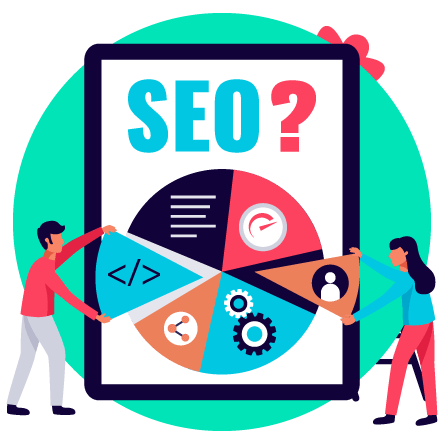

In marketing, SEO helps drive organic traffic to websites so that content and products can be shown to new audiences.

SEO allows online content to be visible to search engines which helps customers new and old find and purchase from your business. Without SEO, your business is invisible in online search which can lead to lost sales and customers.

It usually takes around four to six months for an SEO program to start showing results. That being said, SEO compounds over time, so don’t be surprised if it takes even longer to see the results you want.

Website SEO consists of many factors, from keyword research to alt text, backlinks, and technical optimisations. Keep reading this guide to learn more about these tactics.
Click here to Tweet and share this helpful “What is SEO?” guide.Doing SEO on a website is not a one-step process. It can often take a team of professionals to create a truly holistic SEO plan. That being said, there are some benchmarks you need to hit if you want to get higher SEO ratings .
Below, we’ll go through on-page SEO, off-page SEO, and technical SEO tactics that you can use to improve your website traffic.


On-page SEO refers to the optimisations you can make to visible content and HTML source code to improve your website SEO. On-page SEO is important because it is the best way to show search engines what your content is about and how it should rank your site in the SERPs. Effective on-page SEO can include quality content, headings, image optimisations, title tags, meta descriptions, structured data, information architecture, and content audits on an ongoing basis. Below, we’ll outline four major points to be aware of when performing on-page SEO.

One of the biggest, and likely most well-known, factors of on-page SEO is keyword research. Keywords are the words and phrases that tell search algorithms the context of a page or site. Before you start creating content, you need to consider the kinds of keywords you can rank for and do detailed research to see how you can compete against others ranking for the same keywords. We recommend the following SEO tools for effective keyword research:
When doing your research, look for keywords with a high monthly search volume and a low competition score. This means you will have high traffic to these keywords, without losing top spots to major competitors. It’s important to note that “keyword stuffing” Alt-text, an old black hat SEO tactic, is no longer a viable method for SEO. This is because search algorithms have improved and now know that simply having one word repeated throughout a text does not mean that’s what the content is about. What you should be focusing on is creating dynamic, informational, and cohesive content that is created for your users. To avoid keyword stuffing and other such
SEO mistakes
consider all of the ways you can educate your audience on your business. Whenever you’re using keywords to guide content, first think about your user pain points and figure out how your products can solve them. 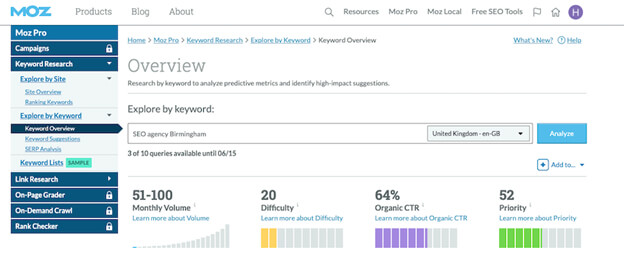

Alt-text is short for alternative text and it refers to written descriptions of images that show up if an image is unable to be viewed. Alt-text is the way you optimise images for your website . Alt-text is important for accessibility as it is read by screen readers so that your image content can be accessed by people who have visual impairments or sensory processing issues. As well, if your image cannot be loaded on the page, a user will see the alt-text and be able to understand the context of the page based on what is written there. For SEO, alt-text provides contextual meaning for search engine crawlers. It gives search engines more meaningful information with which to rank your website. Good alt-text should be:


Meta descriptions are short paragraphs of text placed in the HTML of a webpage that describes what the content is about. In search, meta descriptions show up directly below the page title. You can see an example of this below. 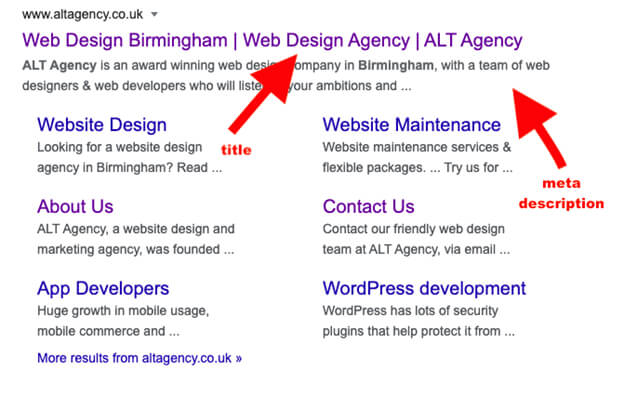 Meta descriptions are important because they tell users what to expect when they click on your page. These descriptions have the power to influence whether or not a user will go to your website or move on to another. Google has stated that meta descriptions do not attribute to your ranking position. That being said, they do impact your click-through rate which is part of your technical SEO ranking. Meta descriptions will also appear if you share web pages or articles across social channels and other websites. If you want your social audiences to click on your articles, it’s important to have engaging and creative meta descriptions.
Meta descriptions are important because they tell users what to expect when they click on your page. These descriptions have the power to influence whether or not a user will go to your website or move on to another. Google has stated that meta descriptions do not attribute to your ranking position. That being said, they do impact your click-through rate which is part of your technical SEO ranking. Meta descriptions will also appear if you share web pages or articles across social channels and other websites. If you want your social audiences to click on your articles, it’s important to have engaging and creative meta descriptions.

Content quality is the most important part of your SEO strategy. Quality content engages your audience and keeps them coming back for more. As well, Google and other search giants have consistently stated that high-quality content will always be prioritized in SERPs. You can find more
info on Google’s search algorithm rankings here
. When creating any content online, make sure it’s relevant to your audience, accurate, informative, and engaging.
This table from Search Engine Land
does a great job of showing the hierarchy of needs when writing for SEO. 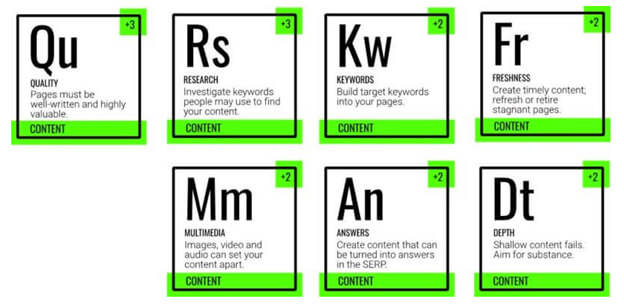
Off-page SEO refers to all of the things you do outside of your website that contribute to your search engine ranking.
The biggest factor of off-page SEO is link building. Link building can be done in several ways, from guest blogging to social media and even PR.
Below is two ways to improve your off-page SEO.


The most important factor in off-page SEO is link building. The more other sites link back to yours, the more authoritative search engines think you are. Essentially, backlinks are the easiest way for algorithms to know your content is accurate. If many other people on the internet agree with your content and cite it within their content, then you gain SEO authority. Link building involves a lot of PR strategies, as you often need to build relationships with other businesses to get links. Consider existing relationships you have and see if there are ways to create a lucrative backlinking plan that benefits both sides. Here are a few easy ways to build your backlinks for SEO :

Being present on social media is an important part of your SEO strategy. Social media websites are some of the most authoritative in the world. In search, they are almost always the top two to three results. The more you can be present on social media, the more spots you’ll have on a SERP page. In addition, content that other social media users share about your brand acts in the same way as a backlink. The more shares, comments, and engagements you get, the more chances you have of turning up in organic search. Here’s how to win social media for SEO :
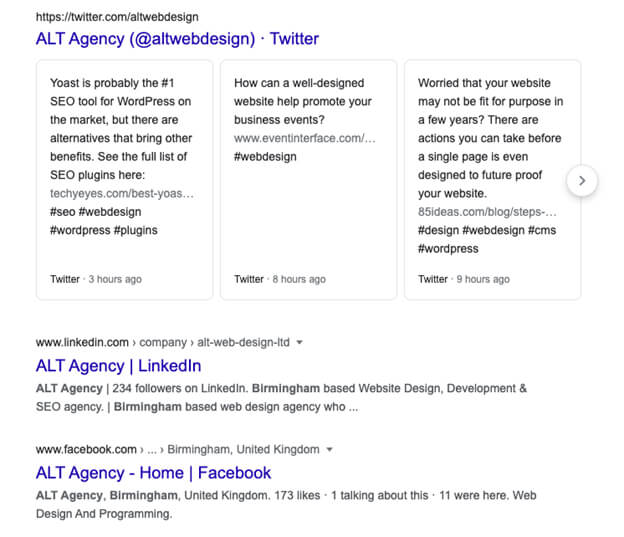
Technical SEO refers to technical optimisations you can make to make your website more efficient for search engine crawlers.
Tactics such as improving your website load times can go a long way in making your website visitors stay longer. The longer people spend on your page, the more authority search engines think you have. Other factors, such as your website is optimised for mobile, can also contribute to your technical SEO rankings.
Below are a few main factors you should consider in technical SEO.


Responsive web design improves SEO
. If your page loads quickly and your users can easily navigate your content, they will stay longer and come back more often. These behaviours signify to search engines that you are running a high-quality website. According to Akamai,
40% of consumers won’t wait more than three seconds
for a web page to load before leaving the site. If you want to know how fast your website loads, paste your web page URL into the
Google Pagespeed Insights
analyzer. You’ll receive a score out of 100 as well as opportunities to improve your load times. Take note of any issues present and find ways to improve them. If you’re stuck, you can always try working with an
SEO agency
to get better results. 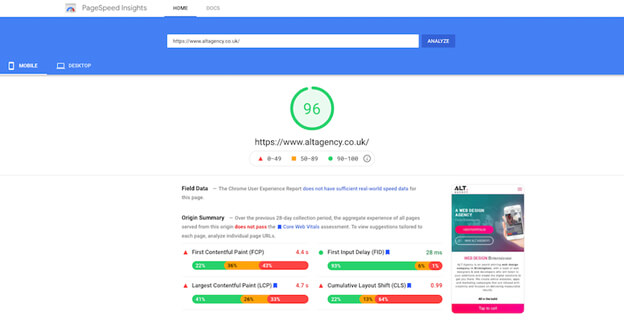

According to Statista,
mobile accounts for nearly half of the web traffic in the world
. In addition, 61% of mobile users are
more likely to buy from mobile-optimised sites
. Not to mention, a study by Akamai found that
14% of users expect pages to load instantly
on mobile. This means your customers are looking at your website on mobile devices and if your site isn’t optimised, you may be losing their attention. Good mobile optimisation included responsive web design, quick loading times, reliable website hosting, and even creating a mobile app. If you’re unsure how to optimise your website for mobile, you can use
Google’s Mobile-Friendly Test
. There are resources included in this test to guide you through any possible optimisations if you need them. 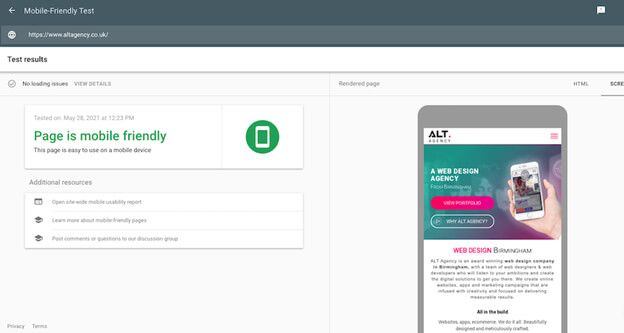

Duplicate content in SEO refers to content that exists in multiple places online. Duplicate content can confuse search engines as they don’t know which result is more relevant and should be displayed on the SERP. This can lead to pages not being indexed and crawled, which can hurt your SEO. To avoid this issue, be sure to steer clear of reposting your content on other websites. Duplicate content can also come from URL issues and scraped or copied content. If you’re worried you have duplicate content on your page, you can use SEO tools like Siteliner , Copyscape , and Duplichecker to scan your site.
Click here to Tweet and share this helpful “What is SEO?” guide.Now that you have all of these SEO tactics in place, you need to figure out if they are working.
In some ways, measuring your SEO success is easy.
If your sales are going up and your website traffic is increasing, this could be a good sign that you’ve done your homework correctly.


Tools like Google Analytics are a great way to check on your SEO success. Here are the most important metrics to track when measuring the success of your SEO strategy:
Building an effective SEO strategy can be difficult and requires time, money, and patience.
While quick SEO wins are possible, they can be short-lived, so your best bet is always to do things right the first time.
Below are a few basic SEO tips to help get your process started.

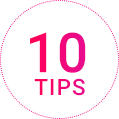
If you’re looking for SEO services in Birmingham, ALT Agency can help. Our SEO technicians have more than 10 years of professional experience in SEO services and would love to show you what we can do. Contact us for more information on SEO services in the UK.
Part 2:
SEO Title Tags (A Guide to Writing Successful Title Tags)
Part 3:
The Complete Guide to Writing High-Performing Meta Descrptions for SEO
Part 4:
Backlinks for SEO: The Ultimate Guide
Image credits:
Business photo created by creativeart – www.freepik.com
Designed by macrovector / Freepik
Director of ALT Agency with a passion for all things design & conversion driven. Love Formula 1, Business and Property Investing.
Now we’d like to hear yours:
Do you have a big idea that you want to bring to the market quickly via a beautiful and user-friendly website? Whether you have the details of a project ready to go or need help finishing an existing project or even starting one from scratch, our team will help you achieve the results you need to make your business profitable.
Get In Touch Today